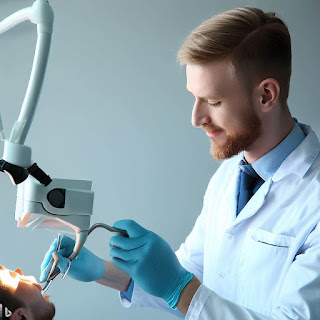Eight things a dentist can know about a patient.
In this case, teeth reflect our health.
1. Stress
Stress is one of the quintessential disorders of the 21st century. Unfortunately, it also has the dubious honor of causing irreversible damage to tooth enamel.
People with high levels of stress are very prone to bruxism. Bruxism is an involuntary habit that occurs mainly during sleeping hours and consists of clenching and/or grinding the teeth.
Bruxers tend to have teeth that are too short or with very regular edges. This is due to the "filing" action that causes constant nightly clenching or grinding of the teeth.
2. Eating disorders
Eating disorders, especially bulimia, may also be suspected after a routine oral examination. The acids expelled when vomiting is very corrosive and erode the enamel.
This erosion is particularly noticeable on the back side of the teeth, which is the side that comes into most contact with the acids from vomiting. As a consequence of the erosion, the teeth become smaller, and the dentin is exposed.
Dentin is the middle layer of the tooth and is protected by the enamel. In addition, it contains the dentinal tubules, i.e., small channels sensitive to thermal changes (cold or heat). When they come into contact with these stimuli, they provoke dental sensitivity in the person.
3. Habit of biting nails, eating pipes, or nibbling on pens
People who grind their nails compulsively and for long periods also suffer damage to their teeth. This habit - known as onychophagia - mainly wears down the central teeth (incisors), most commonly used for nail biting.
A similar, or even more significant, effect is caused by eating pipes or chewing on ballpoint pens, and it is typical for the incisors of people with these habits to show small chips and cracks.
4. Pacifier abuse in infancy
Dentists can notice present habits and situations that occurred several decades ago through the mouth. For example, this is the case of children who sucked their thumb or used the pacifier for a long time during childhood.
These habits, carried out beyond the age of three, are the leading cause of open bites. Open bite is a malocclusion in which the upper and lower front teeth do not contact.
That is, a space between them was caused by the prolonged interposition of the pacifier or thumb.
5. Smoking
Dentists detect a smoking patient in seconds just by looking at his or her mouth. Smoking is one of the easiest things for dentists to guess. Visually, the components of tobacco leave characteristic brown or yellow stains on the teeth.
Equally identifiable is a smoker's breath, especially if they do not have excellent oral hygiene. This is mainly because tobacco decreases the flow of saliva.
Saliva naturally "sweeps" bacteria from the mouth and helps to prevent them from proliferating excessively. However, the reduction of saliva causes bacteria to accumulate, and when they come into contact with food debris, they generate a sulfur-derived compound with an unpleasant aroma.
In addition to the above, it should be noted that smoking is one of the leading causes of the dreaded periodontitis. Periodontitis -also called pyorrhea- is a gum disease that, apart from causing halitosis, can cause teeth to fall out.
6. Consumption of medications
The most obvious case is that of tetracyclines. Tetracyclines are antibiotics banned today but were widely used in the 1970s.
Time showed that the use of tetracyclines in pregnant women and children under 8 years of age caused severe and lifelong staining of the teeth. These stains are manifested by dark lines (gray or brown) readily identifiable to dentists.
The main problem with tetracycline discolorations is that they cannot be removed by dental cleaning or whitening. The only way to mask them is with dental veneers.
7. Lack of tooth brushing
Lack of oral hygiene is another thing that is really easy for dentists to guess. Insufficient brushing causes a wide variety of symptoms both in the short and long term: tartar build-up, bleeding gums, formation of pockets (small triangular spaces between the teeth), cavities, tooth decay, dental pieces falling out, etc.
Therefore, if a dentist tells us that we should brush or floss our teeth more, it is not worth lying and saying that we already do. A quick glance in the mouth is enough to know our hygiene habits.
8. Age
Finally, dentists can also " guess " children's age with surprising accuracy. This is because they have ideally identified at what ages tooth replacement occurs. That is to say, when each baby tooth falls out, the permanent tooth can erupt.
In addition, with a panoramic X-ray, we can observe the degree of maturation of the crown and the dental root, providing information when calculating a child's age.

